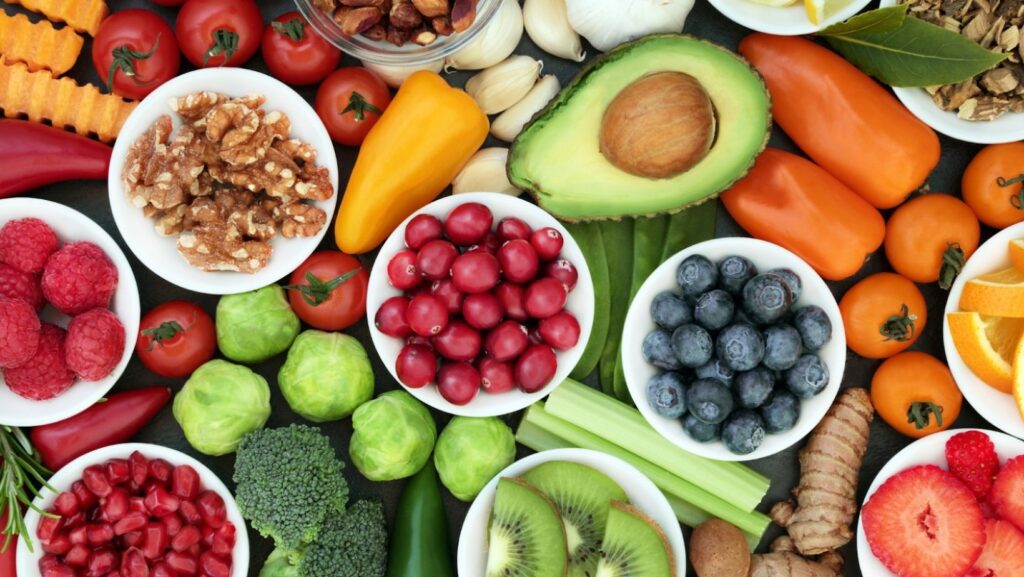There is no achievement without a sound health. Health and well-being are essential for a fulfilling life. However, we see most people consuming a bad diet or not paying enough attention to good food.
Some professional academic writers from companies like CustomWritings.com, who work with academic papers 24/7 and know all the ins and outs of the process, claim that healthy eating is essential.
Education about Healthy Eating
To resolve barriers to eating healthy and promote long-term consumption of appropriate eating behaviors, healthy food accessibility initiatives are frequently paired with diet and health education. In addition, beneficial eating courses, workshops, and educational materials help build expertise and reinforce learning about nutrition fundamentals and healthy food.
Academics in healthy eating include:
- Healthy grocery shopping on a budget
- Preparing nutritious meals and honing cooking skills
- Making healthier versions of family and classic recipes
- Trying and becoming acquainted with new nutritious foods, such as fruits and veggies grown locally or sustainably.
Nutrition classes for addressing specific health conditions, personal nutrition counseling, youth education, nutrient mentoring, instructing cooking classes, grocery store or on-farm trips, and the dispersion of recipe booklets or menu calendars are examples of healthy eating education. A range of diet and health education formats can provide participants with the skills and knowledge they need to make healthy eating choices a priority in their lives.
In various ways, hospital community benefits can help promote healthy eating learning. Healthcare professionals can offer nutrition education. Moreover, the hospital food staff can aid in this initiative as well. Funds can be delivered to other partner agencies to provide curricula or educational materials. To supplement healthy food access projects in the community, healthcare institutions may collaborate with local colleges of public health, teaching hospitals, or nutritionist programs to lead individualized or team nutrition classes.
Healthy Eating Education for Adults – A Few Tips to Live By
Here’s a quick rundown of some ways of eating healthier and getting more exercise.
- Have whole grains frequently. Whole-wheat baked goods, pasta, oatmeal, and brown rice are good options.
- Choose a variety of colorful vegetables. Colored vegetables contain several nutrients. Collard greens, kale, green beans, spinach, yams, and tomatoes are all excellent options.
- Eat only 50 percent of your food at restaurants and consider taking the rest home.
- Walk with your friends or family through parks, on a track, or around your neighborhood.
- Make physical activity a top priority.
- Aim for 100 minutes of weekly aerobic exercise, such as brisk walking or biking.
- If you don’t have much time, spread out your activities throughout the day.
Weight management
If managing your weight is difficult for you, you are not the only one in today’s world. In reality, more than 39% of American adults are obese. Obesity can cause heart diseases, type-2 diabetes, kidney diseases, and other chronic health issues. Setting health-improvement goals can help you reduce your chance of having weight-related health issues.
Reduce your intake of high-calorie foods and drinks. Some meals are high in calories but low in essential nutrients. Refined sugars and solid fats add a lot of calories to foods, but they only provide a small intake of healthy nutrients. Although salt doesn’t contain calories, it is commonly found in high-calorie foods. Adults must limit sweetened beverages and foods, including solid fats such as cheese, butter, margarine, shortening white bread, white rice, and pasta made from refined grains.
Every day, choose a variety of colorful vegetables. Dark, green vegetables like spinach, cabbage, collards, and mustard greens, as well as red and orange vegetables like carrots, yams, red peppers, and tomatoes, are ideal. If you’ve had kidney stones before, you should be aware that certain vegetables, such as spinach and sweet potatoes, have always been high in oxalate. This is a chemical that mixes with calcium in the urine to create types of kidney stones. If you already have kidney problems, you should limit your intake. However, these are excellent options for others. Consume a rainbow of food colors!
Role in the Education and Promotion of Healthy Eating
According to research, food choices and eating habits are established early in life. Fitness and food schooling models designed for young participants aid in forming healthy habits that are more likely to persist into later life. Youth education could include:
- Classroom-friendly curricula.
- School garden initiatives.
- Farm-to-school programs.
- Preparing food classes or competitions
Another crucial component of youth nutrition programs is that youngsters are allowed to try new food products at no expense to their family members. For example, low-income family members may be hesitant to buy new and different vegetables and fruit since they may go to waste if their children don’t like them.
According to the US Department of Health and Human Services, poor diet and lack of exercise cause as many early deaths as tobacco—more than 1,200 deaths per day. In addition, diet is perceived as a “known risk” for the advancement of the nation’s significant causes of death: heart disease, cancer, as well as stroke, as well as diabetes, hypertension, and osteoporosis, among many others, as per the Centers for Disease Control (CDC).
When one of our main aims as educators is to assist learners in preparing for productive and healthy lives, health and nutrition education are essential. Establishing physical activities and good diet habits in childhood is the most effective and efficient way of improving the wellness of America’s youth. Unfortunately, according to the CDC, “young people with bad eating habits generally keep them up as they get older.” Once established in childhood, behaviors and physiological risks are hard to change.”
However, less than one-third of schools offer comprehensive nutrition education to influence students’ ambition, attitudes, and eating behaviors.
The majority of us already associate nutrition with well-being. If we take it a step further and link well-being to educational goals, we have effectively linked nourishment to academic achievement. There is a lot of anxiety these days about test scores. However, if children are unable to learn because they are hungry or do not receive enough nutrient-dense food at home, school systems that do not make the nutrition-performance correlation in the lunchroom end up weakening what they are attempting to do in the schoolroom.
This article discussed healthy eating and the role of education in healthy eating, emphasizing the responsibility of educators to promote health and wellbeing just as much as academic achievements.















